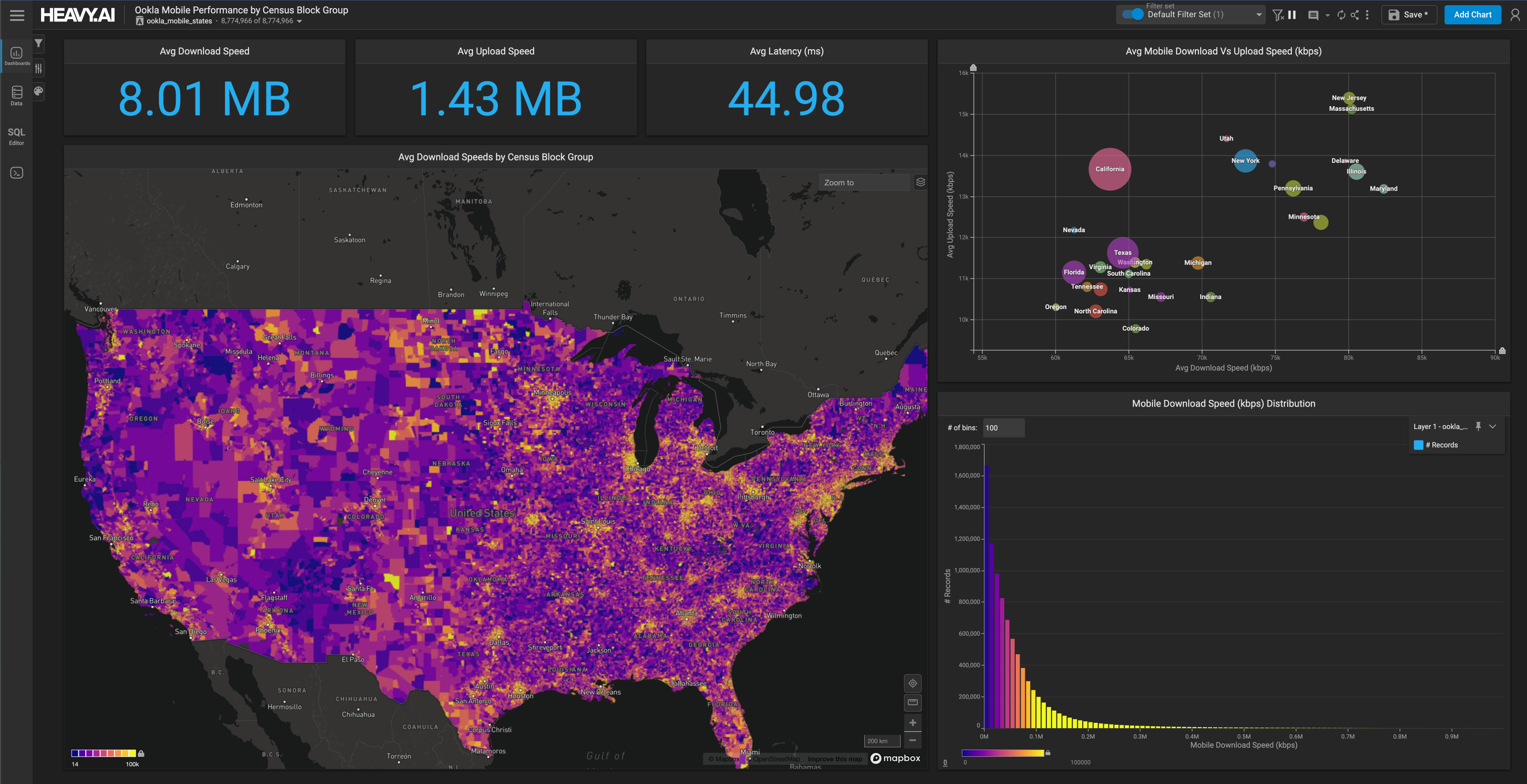
Preventing the Next Paradise Disaster
Try HeavyIQ Conversational Analytics on 400 million tweets
Download HEAVY.AI Free, a full-featured version available for use at no cost.
GET FREE LICENSESevere drought has engulfed nearly 90% of the Western United States and significant swaths of Southern Canada this summer.
Combining those conditions with an increase in extreme heat and lightning activity has led the US National Interagency Fire Center and Natural Resources Canada to forecast an above-normal wildfire potential for the region.

Unfortunately, this isn't new or surprising to anyone. Since 2015, the United States has seen an average of 100 more large wildfires every year compared to the year before.
Climate change, development patterns, and land management practices have produced faster, more intense wildfires that overwhelm many communities' capacity to respond effectively.
2018's Camp Fire, for example, resulted in billions of dollars in economic losses, damage to natural resources, devastation to communities like Paradise and Concow, and the tragic loss of human life.
In response to this growing threat, the Biden administration assembled Governors from Western states, Cabinet officials, and various partners late last month.
They discussed ways to protect communities across the country from wildfires and their devastating impacts by strengthening fire prevention, preparedness, mitigation, and response efforts.
Several proposed actions, initiatives, and investments emerged, including:
- Building a more responsive and resilient wildland firefighting workforce
- Improving wildfire response capabilities
- Reducing the risk of wildfires through hazardous fuels management and mitigation investments
- And utilizing data and technology to protect communities.

Our organization's time serving the US and Canadian governments has instilled in us an appreciation for the urgency that comes with "utilizing data and technology to protect communities."
We've found that the latest wildfire science requires massive, complex, and diverse data sets that are difficult for many technologies to accommodate. They are often geospatial, time-enabled, and sourced from internal and external stakeholders.
Government agencies and their partners can use HEAVY.AI to tackle these challenges by driving their largest, decision quality data sets towards actions that help communities stay safe from wildfires.
These are inherently mission-centered capabilities that align with the focal points outlined in the administration's wildfire data and technology initiative, like:
- Leveraging emerging technologies to detect new wildland fires
- Using science and technology to improve wildfire response
- Preparing for potential power grid impacts
- Providing actionable information to help communities stay safe during a wildfire

Making progress on these proposed initiatives will take many forms in practice.
For example, a government agency and its energy partners may need to examine the cross-section of surface and ladder fuels, electrical transmission lines, and the probability of four and eight-foot flames across California. They could use this information to mitigate the causes of wildfires and prepare the power grid for potential future impacts.
Similarly, an official may need to quickly combine wildfire observations with street networks, building footprints, and data representing vulnerable populations that live and work in those spaces to improve communication with the community and prioritize response operations.
Furthermore, policymakers in collaboration with home insurers may need to understand historical wildfire burn severity and monitor the behaviors that contributed to sustained burns. Or model the intersection of housing and future wildfire trajectories to develop equitable policies that shield communities.

The examples above offer a small glimpse into the people-focused missions HEAVY.AI's visual analytics platform can be applied to immediately. There are ways to extend these uses beyond the descriptions here, and that's where you come in. You can try HEAVY.AI today and evaluate where it best fits into your organization or team's mission.
Once you get started, please share your feedback with us on LinkedIn, Twitter, or our Community Forums.




